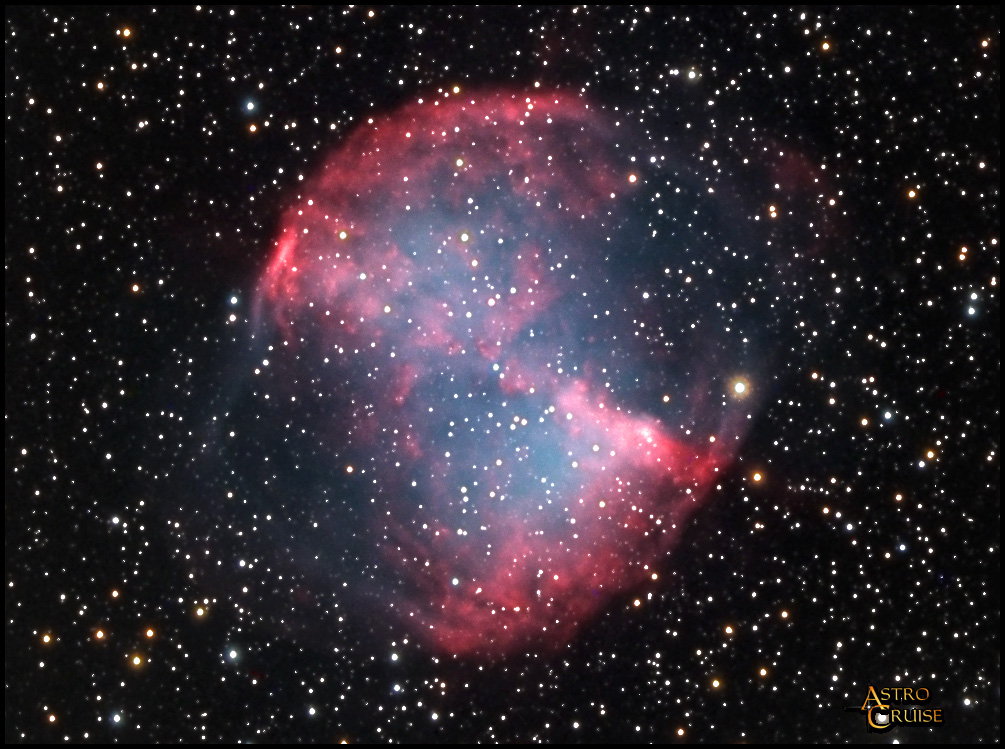
 |
Object data: M27 (NGC 6853) is the famous Dumbbell Nebula, one of the most photographed planetary nebulae in the night sky. It is located in Vulpecula at the southern end of Cygnus. Its Magnitude 7.4 visual brightness makes it easy to find even in small telescopes. It is estimated to be 1,200 light-years from Earth. The Dumbbell Nebula was discovered on 12th July 1764 by Charles Messier and was the first planetary nebula to be discovered. Planetary nebulae are formed in the dying stages of a star when the core fusion reactions decline to the extent that the star's structure cannot be supported - gravity forces the outer part of the star to collapse inwards, causing the inner part to condense and heat up. The intense build up of pressure and radiation causes the outer shell to 'explode' and be driven away. The intense stellar wind causes the surrounding gases to ionize in bright colours. Planetary nebulae are in fact very common in our galaxy, other noteworthy examples being the Helix Nebula and the Ring Nebula, though most of them are much smaller and less significant than these examples.
Date: 15/06/02
Location: Southern France
Conditions: calm, transparency=8, seeing=9 (zero Jetstream)
Optics: RCOS Ritchey-Chretien 12.5" f/9 working at f/9
Mount: AP 900 GTO on Portable Pier
Camera: SBIG ST-8E / CFW-8
Guiding: Integral ST-8E guiding chip controlled via MaximCCD
Exposure: LRGB: Luminance: 3x15 minutes; RGB: 15:15:30 minutes binned 2x2
Processing: Image acquisition, calibration, combining, and DDP were applied using Maxim DL. Deconvolution was applied using AIP. Registration of Luminance and RGB images done using Registar, and a final curves adjustment was applied in Photoshop.
Notes: After an appalling first week with severe storms, conditions gradually improved during the second week to reach an apex on the night this image was taken. Pressure was very high over southern France and there was zero Jetstream. Seeing was as good as I have ever recorded - FWHM on this image is 1.7 arc seconds. This was actually a 'grab shot' taken during the last 30 minutes of darkness and there was time for only three exposures. The third exposure was running into a very bright sky but it turned out well enough. The preceeding part of the night had been devoted to southern sky objects - more later. RGB exposures had been taken three nights previously under much worse conditions.
|
|
|
|